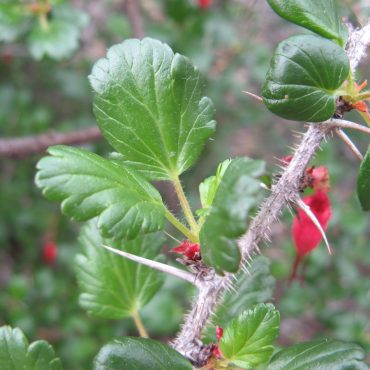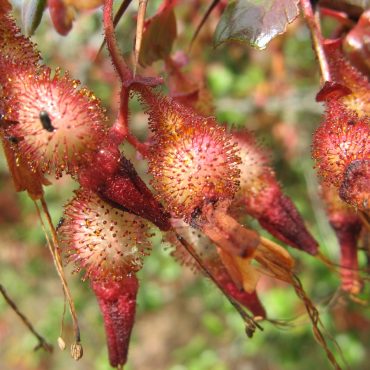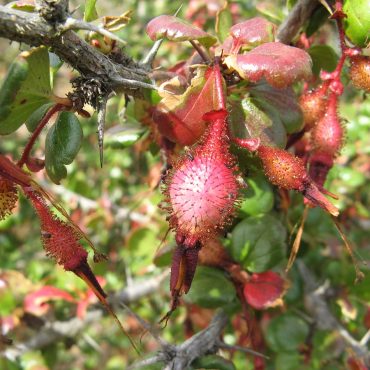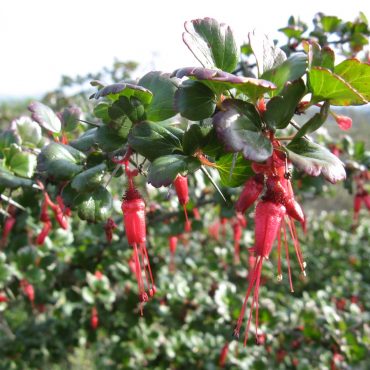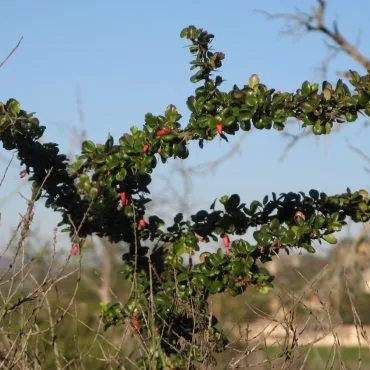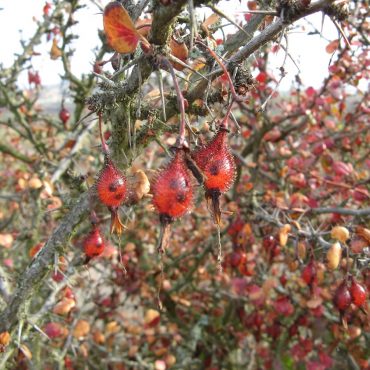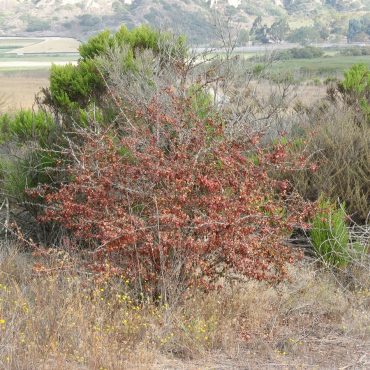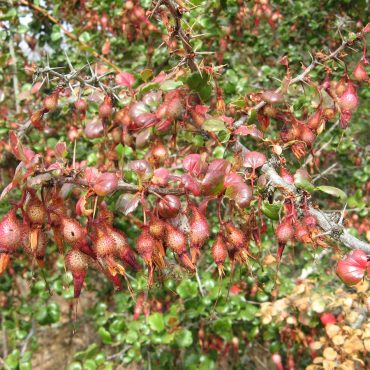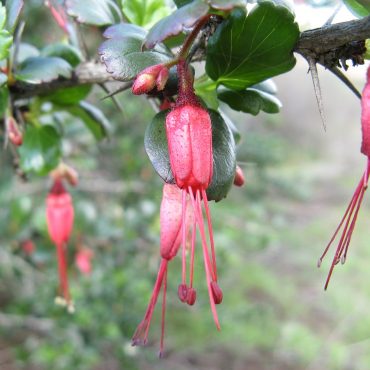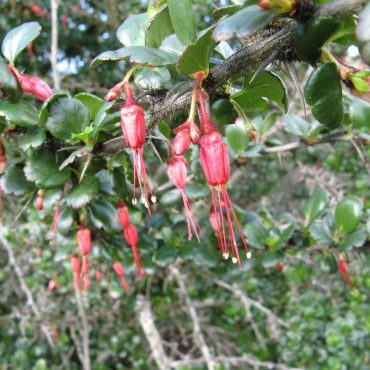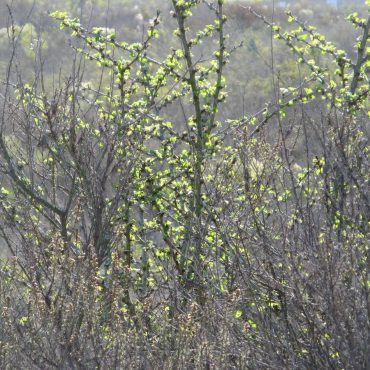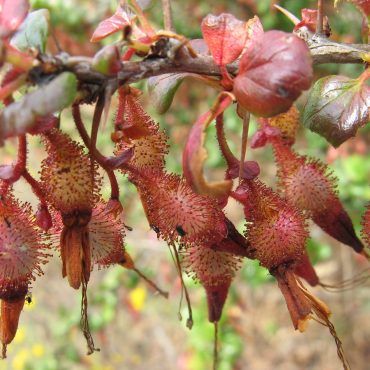One of our most spectacular but least friendly shrubs is the fuchsia-flowered gooseberry (Ribes speciosum). In late winter into spring, its long, graceful branches are covered with shiny green leaves and lovely red pendant-like flowers, which conceal long and vicious spines (technically, thorns). Later, prickly globular red fruits develop. This shrub is one of several plants in the Reserve that survive long dry summers by going dormant. By late summer, leaves turn red. In autumn, when leaves have fallen, all that remains of fuchsia-flowered gooseberry is an intimidating barrier of spines. Las Pilitas Nursery suggests that “Mr. Wilson should have planted [fuchsia-flowered gooseberry] for Dennis the Menace”.
Fuchsia-flowered gooseberry is pollinated by hummingbirds. In return, its nectar provides an important energy source for hummingbirds on their spring migrations.
Fuchsia-flowered gooseberry is native to coastal regions of southern and central California and northern Baja California. In the Reserve, several plants can be seen in East Basin, just east of the junction of the main trail to La Orilla and the spur trail to Santa Carina trailhead.


